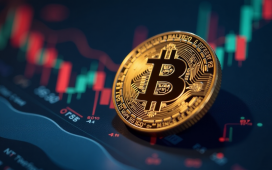On the crypto market, liquidity is a very important parameter.
Indeed, among all the parameters, it is the one that individually can have the greatest impact on prices, in addition to individual events of systemic importance.
The role of liquidity in financial markets
With the term “liquidità” we refer to those assets that can be traded on the market very easily and quickly.
The most liquid instrument of all is money, also because it was created specifically to be easily exchangeable in an extremely rapid manner.
There are also assets that are extremely difficult to sell, such as those that are locked until a certain date.
The more an asset can be easily and quickly sold, the more it is considered liquid, therefore there are different degrees of liquidity.
Money is the most liquid asset that exists, while for example physical gold is a bit less liquid. A property by its very nature is not very liquid, because it takes a while to sell it, while some assets can even be totally illiquid if they cannot be spent at all (such as seized funds).
On financial markets, in general, the assets that are traded are liquid, except for those that cannot be transferred because they are restricted.
But even in financial markets, there are different degrees of liquidity.
In particular, when we talk about financial markets with real liquidity, we mean money, and those assets that are nothing more than highly liquid different forms of money.
In other terms, in financial markets, liquidity is simply constituted by the most liquid assets. Among these are cash, both in physical and digital form, and those very short-term investments considered equivalent to cash.
Liquidity in the crypto market
Il mercato crypto è solamente una porzione del mercato finanziario generale.
So what applies to traditional financial markets also applies to crypto markets, regarding liquidity.
What changes, however, are precisely the assets that are considered liquid in the crypto market.
Just like in traditional financial markets, in the crypto market an important part of the liquidity is made up of fiat money.
Tuttavia, a differenza di quanto comunemente si pensa, sui mercati crypto il denaro fiat non è quello più facilmente e velocemente spostabile.
For example, to withdraw or deposit fiat currency on exchanges, it takes from a few minutes to a few days, while with other assets the movement is easier and faster.
Ecco così che sul mercato crypto la maggior parte della liquidità è composta da token che replicano le valute fiat, ovvero dalle cosiddette stablecoin.
To tell the truth, there are also stablecoin not pegged to fiat currencies, such as tokenized gold, but nowadays the term stablecoin is often used as a synonym for tokenized fiat currencies.
The majority of liquidity in the crypto markets is made up of tokenized fiat currencies, or stablecoin, with fiat money following in second place. In third place are algorithmic stablecoin, while any other forms of liquidity in the crypto markets are practically absent.
How liquidity moves
On financial markets, the most important thing regarding liquidity is not the amount present, but the speed at which it is traded.
For example, if a billion dollars were traded only once a day, it would have a lower impact than a million dollars traded more than ten times a day.
The sudden movements of liquidity that shift from one asset to another are the true culprits of price volatility.
In general, however, regarding long-term price trends, the overall liquidity variation matters a lot. For example, between 2020 and 2021, when the Fed injected more dollars into the financial markets in less than two years than there were in total in 2019, the result was a generic strong and sudden rise in all prices.
In other terms, the increase in liquidity tends to generate inflation, because it actually triggers an increase in purchase demand.
Therefore, in the medium-long term, the variations in overall liquidity matter a lot, while in the short term, how quickly it moves matters more.
For example, cash money held idle in a bank account does not generate the slightest volatility in the financial markets, whereas if it is spent to purchase financial assets it can generate a price increase.
The current crypto situation: market and liquidity
One data point that can help understand the current liquidity level of the crypto markets is the trading volumes in stablecoin.
Among other things, it should be noted that practically every day the cryptocurrency that records the highest trading volumes is USDT, which is absolutely one of the most liquid.
Tendenzialmente i volumi di scambio giornaliero di USDT sui mercati crypto (circa 100 miliardi di dollari) sono doppi rispetto a quello di Bitcoin e Ethereum (entrambi attorno ai 50 miliardi), e di circa 10 volte superiori a quelli della seconda maggiore stablecoin, USDT (10 miliardi).
Sui mercati finanziari tradizionali il volume di scambio complessivo di USD è enormemente superiore, tanto che ad esempio il singolo titolo Nvidia sta facendo registrare volumi di scambi giornalieri non molto distanti da quelli di USDT sui mercati crypto, e quasi doppi rispetto a quelli di Bitcoin o di Ethereum.
Taking instead as a reference the overall trading volumes in all cryptocurrencies, the crypto market in recent days is recording a daily trading volume exceeding 100 billion dollars, but at the beginning of May it was only 70.
During the peak in mid-March, they had risen to 150, which is well below the all-time highs of 300 billion dollars traded, for example, on April 19, 2021.
In other words, the liquidity circulating in the crypto markets actually varies from day to day, even if with not exaggerated variations, but it varies especially from period to period, with large jumps during the bullrun, and strong contractions during the bear-market.
Note that these variations not only affect volatility but also prices, and it is precisely for this reason that when there is less liquidity, prices tend to be low, while when liquidity rises, it also tends to increase prices.











